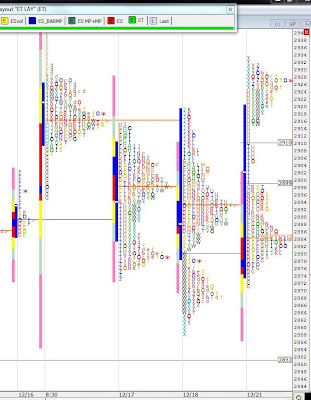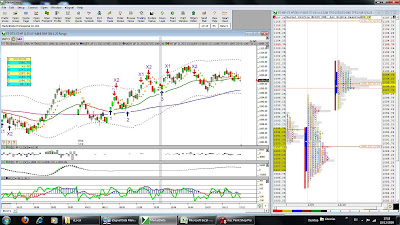Yesterday, I had a question about whether I trade anything else besides the ES and the ET (DowEuro50). It got me thinking back a little as you do at year's end.
I started trading stocks in about 1963 or 1964. I remember trading my first stock, I made about a 20% profit and was hooked for life. Subsequent trades where not all so successful. I rode the gold boom, traded t-bonds after Richard Sandor invented financial futures in about 1982. I was lucky enough to have the great man in my trading room in London one afternoon. He changed the financial markets for ever.
I traded options before the famous Black-Scholes model was created. We just made up the prices based on time and what we thought might happen. Not very scientific.
A famous firm, Donaldson, Lufkin and Jenrette (DLJ) had a great FX operation where they had a number of banks on their dealing desks and made pretty tight spreads for those days. The IMM currencies were there too but the volume was low. In those early days I loaded my daily data down via modem and had 5 or 6 Apple computers grinding out charts on dot matrix printers all night. I need so many computers because it needed that many to be able to produce the technical analysis charts during the night for the 10 or so markets I was following.
I read an article about Market Profile in about 1983-84, and got the CBOT manual and stayed up all of the first night studying. I knew that I had something important in my hands but could not find a focus. I then met Pete Steidlmayer and sat through a couple of his seminars in the U.S. and London. I went to Jim Dalton's seminar too. I still really hadn't yet worked out how to consistently use MP for short term intra day trading.
I then became a local on LIFFE after seeing an article in the Financial Times about a local called David Kyte, a really great trader and a great guy too. He still runs his own clearing firm in London with Peter Green, another of the world's good people. I had visited the LIFFE floor in about 1983 after it had opened and you could have rolled a bowling ball from one end of the floor to the other without hitting anyone. I didn't think it would take off after seeing the pits in Chicago. My mistake. Three or four years later I was on the floor and there I really learned how order flow moved the markets. The Berlin Wall collapsed, the Germans unified and I was trading up to 2,500 contracts a day. Then the Germans started the DTB and soon the writing was on the wall.
The pits are shrinking and for the last 10 years people have been leaving them and trying to convert their skills into electronic trading. Trading volumes have, except for recent times, been increasing exponentially and new contracts created to meet the new requirements.
I mainly trade stock indices now because that's where the volume and money is for me. Highly liquid markets seem smoother to trade, are less influenced by any one trader, and, most importantly, allow me to scale trades up to the size I want without having to make any other adjustments. I don't trade FX any longer because of the lack of transparency and volume information.
 It began with the inauguration of our country's first black president. The Steelers won the Super Bowl just 12 days later. By June, the City of Pittsburgh was living large after celebrating a remarkable Game 7 victory by the Penguins to clinch the Stanley Cup.
It began with the inauguration of our country's first black president. The Steelers won the Super Bowl just 12 days later. By June, the City of Pittsburgh was living large after celebrating a remarkable Game 7 victory by the Penguins to clinch the Stanley Cup.







































